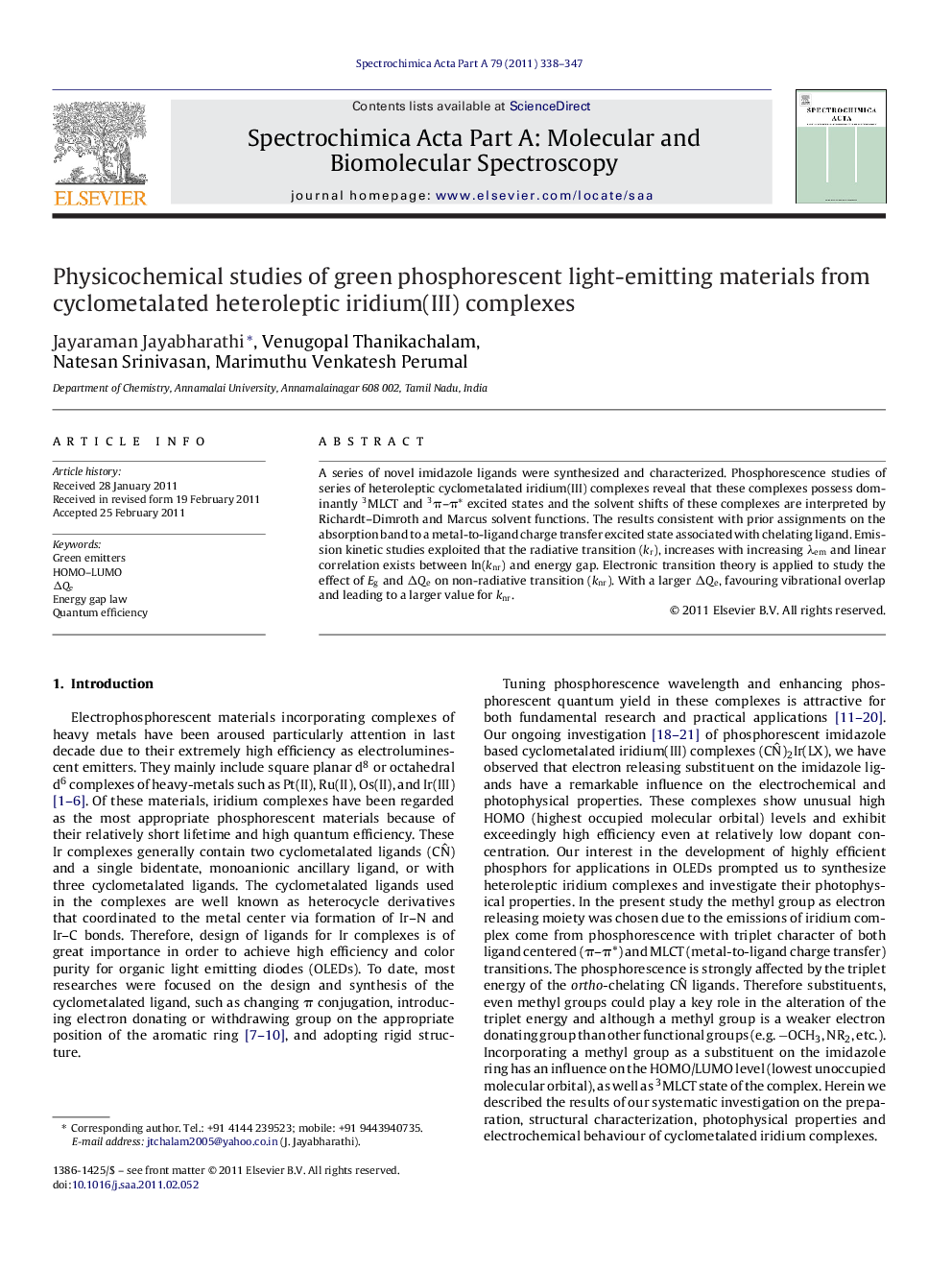| Article ID | Journal | Published Year | Pages | File Type |
|---|---|---|---|---|
| 1235726 | Spectrochimica Acta Part A: Molecular and Biomolecular Spectroscopy | 2011 | 10 Pages |
A series of novel imidazole ligands were synthesized and characterized. Phosphorescence studies of series of heteroleptic cyclometalated iridium(III) complexes reveal that these complexes possess dominantly 3MLCT and 3π–π* excited states and the solvent shifts of these complexes are interpreted by Richardt–Dimroth and Marcus solvent functions. The results consistent with prior assignments on the absorption band to a metal-to-ligand charge transfer excited state associated with chelating ligand. Emission kinetic studies exploited that the radiative transition (kr), increases with increasing λem and linear correlation exists between ln(knr) and energy gap. Electronic transition theory is applied to study the effect of Eg and ΔQe on non-radiative transition (knr). With a larger ΔQe, favouring vibrational overlap and leading to a larger value for knr.
Graphical abstractFigure optionsDownload full-size imageDownload as PowerPoint slideHighlights► Mixed 3MLCT–1MLCT transitions: the intensity of 3MLCT ← S0 is close to 1MLCT ← S0, shows 3MLCT ← S0 is allowed by mixing of spin–orbit coupling. ► Mixing of excited states (LC and MLCT): the phosphorescence spectra of 1–4 show broad shape (3MLCT) and also vibronic fine structure (3π–π*). ► Marcus and Richardt–Dimroth solvent functions: to estimate the transition dipoles associated with low lying MLCT excited state. ► Electronic transition: the energy difference (1E1 − 3E1), increases with the decrease in λem and therefore, kr increases with an increase in λem.
